Top 10 attractions to see in Edinburgh
By Serena Pedrioli
Edinburgh (in Scottish Gaelic as Dùn Èideann) is the charming capital of Scotland, located on its east coast. With its atmosphere rich in history and culture, it is a must-see destination for fans of art, literature and architecture. In addition to attracting Harry Potter fans, the city boasts iconic sites such as Edinburgh Castle and the charming Old and New Towns, both of which are UNESCO World Heritage Sites.
Discover in this article the 10 must-see attractions during your visit to Edinburgh and immerse yourself in the authenticity of this Scottish capital.
Table of Contents
1.Edinburgh Castle

Edinburgh Castle, with its origins dating back to at least the 7th century, dominates the city from atop a hill. This imposing fortress is one of the most important historical symbols of the Scottish capital. Most of the buildings visible today date from the 16th century, but the 12th-century St. Margaret's Chapel is the oldest building still intact in Edinburgh.
In addition to being one of Britain’s oldest fortresses, the castle has always played a central role in Scottish military operations. Today it still houses a permanent military garrison, albeit with ceremonial functions. Here you will also find the headquarters of the Royal Regiment of Scotland and the British 52nd Infantry Brigade, as well as the museums of the Royal Scots and the Royal Scots Dragoon Guards. In 1819, Sir Walter Scott persuaded the Prince Regent (future George IV) to display the Scottish Crown Jewels inside the castle. Since then, more and more areas of the fortress have been opened to visitors, becoming one of Edinburgh’s most popular attractions.
To avoid long lines, it is advisable to purchase tickets on the official website. The castle is open from April to September from 9:30 a.m. to 6 p.m., while from October to March closing time is earlier at 5 p.m. Consider setting aside at least 2 hours for a thorough tour of this historic monument.
2. Royal Mile

The Royal Mile (in Scottish Gaelic, Am Mìle Rìoghail) is Edinburgh's most iconic street, cutting the Old Town in two, connecting the capital's two main landmarks: Edinburgh Castle to the west and the Palace of Holyroodhouse to the east. About 1,814 meters long, it gave rise to a specific unit of measurement: the Scottish mile. Along the Royal Mile, which winds through the heart of the Old Town, are numerous characteristic streets such as Castle Esplanade, Castlehill, Lawnmarket, High Street, Canongate and Abbey Strand. This is the busiest street in the Old Town, particularly popular with tourists, and rivals Princes Street in the New Town for shopping.
Lungo il percorso, è possibile scoprire decine di vicoli nascosti (closes) e cortili (courts), perfetti per immergersi nell’atmosfera medievale di Edimburgo. La strada è costeggiata da imponenti edifici storici, tra cui la Cattedrale di St. Giles, attrazioni come The Real Mary King’s Close e il Scottish Storytelling Centre, nonché alcuni dei migliori ristoranti e pub della città. Per un tocco di modernità, non perdere l’occasione di visitare il Parlamento Scozzese, un edificio dal design all’avanguardia che offre uno scorcio sulla storia contemporanea della Scozia.
3. Victoria Street

Among the most charming and popular streets for tourists in Edinburgh, Victoria Street enchants with its colorful facades and distinctive cobblestones. Built between 1829 and 1834 to the design of architect Thomas Hamilton, this picturesque street directly connects Grassmarket to Castle Hill, becoming one of the main arteries of the old town. Originally named Bow Street, it was renamed in honor of Queen Victoria after her coronation in 1837.
Victoria Street is known for inspiring the design of Diagon Alley, the famous magical street in the Harry Potter saga. Thanks to this connection, many stores dedicated to Harry Potter fans have found a home here, including the famous Diagon House, a magical goods emporium located at No. 40, where Robert Cresser’s brush store, active from 1873 to 2004, once stood.
The beauty of Victoria Street lies not only in its history and vibrant architecture, but also in its many independent stores. From the Old Town Bookshop to I.J Mellis Cheesemonger’s artisan cheeses, from Swish’s fashion pieces to The Red Door Gallery’s art prints, Victoria Street is a unique and local shopper’s paradise.
Don’t miss a visit to Aha Ha Ha, a store that brings a smile with makeup, costumes and magical items, steeped in the street’s legend. In fact, the story goes that before Victoria Street was built, the area was inhabited by the Wizard of West Bow, a dark and mysterious character whose house remained uninhabited for a century, fueling tales of witchcraft and hauntings.
With its fusion of history, culture and a lively atmosphere, Victoria Street is a must-see for anyone visiting Edinburgh
4. Greyfriars Kirkyard
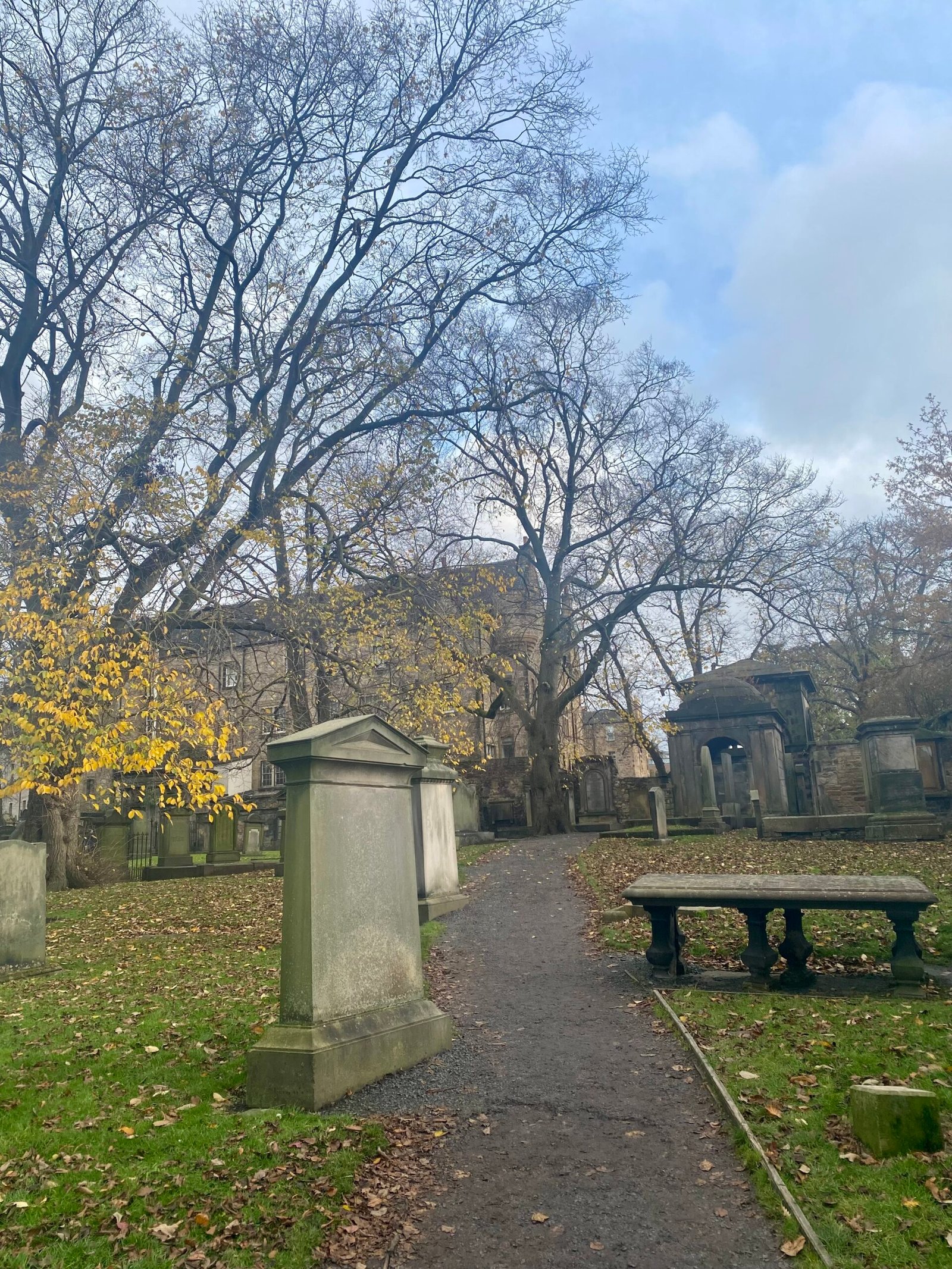
Greyfriars Kirkyard Cemetery in Edinburgh is a place that mixes history, beauty and an aura of mystery. Located near the bustling Grassmarket Square, this cemetery dates back to the 16th century, built after St. Giles Cemetery was now full. It owes its name to the “Greyfriars,” the monastic order of Franciscans that inhabited the site. Today, it is known not only for being one of the oldest in the city, but also for its fascinating and, at times, sinister stories.
During daylight hours, Greyfriars is a place of serenity, often described as a “garden of souls.” Ancient moss-covered headstones surrounded by trees create an atmospheric setting where Edinburgh residents stroll, dine or read in peace. Despite the peaceful atmosphere, the cemetery holds centuries of history, with graves belonging to such illustrious figures as the scientist James Hutton or the famous Greyfriars Bobby, the faithful little dog who watched over his master’s grave for 14 years, moving the entire city. Bobby’s story has become a true legend, and his grave, near the entrance to the cemetery, is one of the most visited places decorated with small gifts by tourists.
As evening comes, the cemetery changes its face, transforming into a place that inspires awe. Greyfriars is considered one of the most haunted places in Edinburgh, mainly because of the legendary Mackenzie’s Poltergeist, linked to the figure of George Mackenzie, known as “Bloody Mackenzie.” This figure, once a jurist under the reign of Charles II, was responsible for the imprisonment and death of hundreds of Presbyterians during the religious struggles of the 17th century. Many of them were imprisoned in an area of the cemetery known as the Covenanters’ Prison, a desolate place that saw suffering and death.
Mackenzie’s tomb, the Black Mausoleum, has been the focus of numerous reports of paranormal phenomena since the 1990s. There are reports of sudden freezing sensations, fainting spells, unexplained scratching and a strong emotional presence. Some believe that Mackenzie’s spirit has never left the place and haunts anyone who dares to approach his crypt. Several attempts at exorcism have been made, but without success, and many paranormal scholars continue to investigate what happens within these walls.
Greyfriars also has a significant connection to the Harry Potter saga. Writer J.K. Rowling, while writing her books, often frequented the nearby Elephant House café and walked among the graves in the cemetery. Many fans believe that some of the names on the gravestones inspired the characters in the saga. Prominent among them is the grave of Thomas Riddell, which clearly recalls the name of the real Lord Voldemort, Tom Riddle. The tombstone of William McGonagall, a Scottish poet known for his bad verse, also has a surname similar to that of Professor Minerva McGonagall.
Today, Greyfriars is a must-see for visitors to Edinburgh. Between organized tours telling the stories of local ghosts and legends, and pilgrimages by Harry Potter fans, this place remains a crossroads of past, mystery and imagination. Day or night, Greyfriars is an icon of the Scottish capital, where history and myth come together in a fascinating setting.
5. Calton Hill
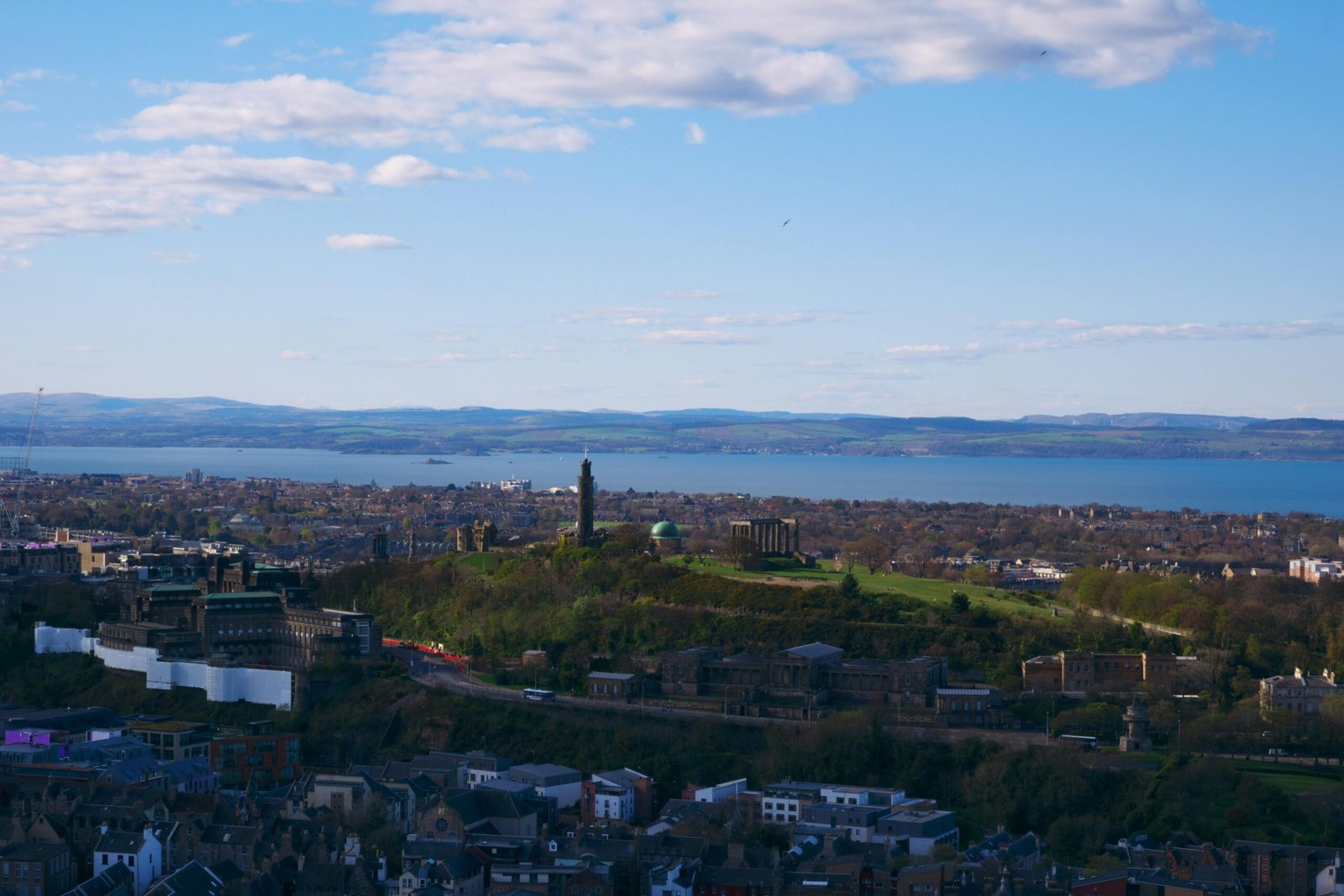
Calton Hill is one of Edinburgh's main attractions, ideal for enjoying spectacular views of the city by day and night. Located east of the New Town near Princes Street, the hill is famous for its monuments, including the National Monument of Scotland, designed to honor the fallen of the Napoleonic Wars but left unfinished. Its Parthenon-style columns, once criticized as “the shame of Edinburgh,” are now appreciated by citizens.
Also on the hill is the City Observatory, part of local astronomical history, and the Nelson Monument, built between 1807 and 1815 to commemorate Admiral Nelson’s victory at the Battle of Trafalgar. From the top of the monument’s tower, reached by 170 steps, there is a panoramic view of the city.
Every April 30, the hill comes alive with the Beltane Fire Festival, an ancient festival celebrating the arrival of spring with dancing around a fire to the sound of drums.
In addition to historic monuments, Calton Hill is home to the Collective Gallery of contemporary art and connects to Leith Walk, a lively area with bars and restaurants, and bustling Broughton Street, known for its cafes and gift stores.
6.Cathedral of Saint Egidio

St. Giles Cathedral in Edinburgh, located along the famous Royal Mile between Edinburgh Castle and the Palace of Holyroodhouse, is one of the Scottish capital's most iconic historic attractions. Erected on the remains of an ancient 9th-century shrine, this imposing building was dedicated to St. Giles, patron saint of lepers.
After the Protestant Reformation, the cathedral underwent numerous alterations and renovations, making it a fascinating mix of architectural styles. The most significant reconstruction work occurred in the 15th century, when the church was rebuilt in the Gothic style following a devastating fire caused by the English in 1385. Although it is commonly referred to as “Edinburgh Cathedral,” technically it cannot claim this title since it is not an episcopal see. However, it remains a place of great religious and historical importance, often visited by tourists and architecture enthusiasts.
Crossing the threshold of St. Aegidius Cathedral, one is immediately struck by the variety of materials and colors of the ceiling, which tell of the different phases of construction and renovation. Although the floor plan of the cathedral was originally in the shape of a cross, the addition of side chapels changed the original structure, giving the building an even more complex and striking appearance. One of the most fascinating details are the extraordinary stained glass windows, which date back to the 19th century and create a warm and welcoming atmosphere thanks to the light they filter through. Also inside the nave is a statue dedicated to John Knox, a leader of the Scottish Reformation and the cathedral’s first Protestant pastor.
One of the must-sees at St. Aegidius Cathedral is the Thistle Chapel (Thistle Chapel), located near the main entrance. Built between 1909 and 1911 on a commission from the Knights of the Order of the Thistle, this chapel is a true masterpiece of the Gothic style, famous for its elegant details and its collected atmosphere. If you look up, you can admire the cathedral’s ceiling, adorned with angels playing musical instruments-including, of course, a bagpipe, the quintessential symbol of Scotland!
St. Giles Cathedral is located in Parliament Square, in the heart of the Royal Mile. Opening hours are Monday through Friday from 9:00 am to 6:00 pm, Saturday from 9:00 am to 5:00 pm, and Sunday from 1:00 pm to 5:00 pm. Admission is free, but a permit is required to take photographs at a cost of £2 (about €2.40).
7. Princes Street Gardens
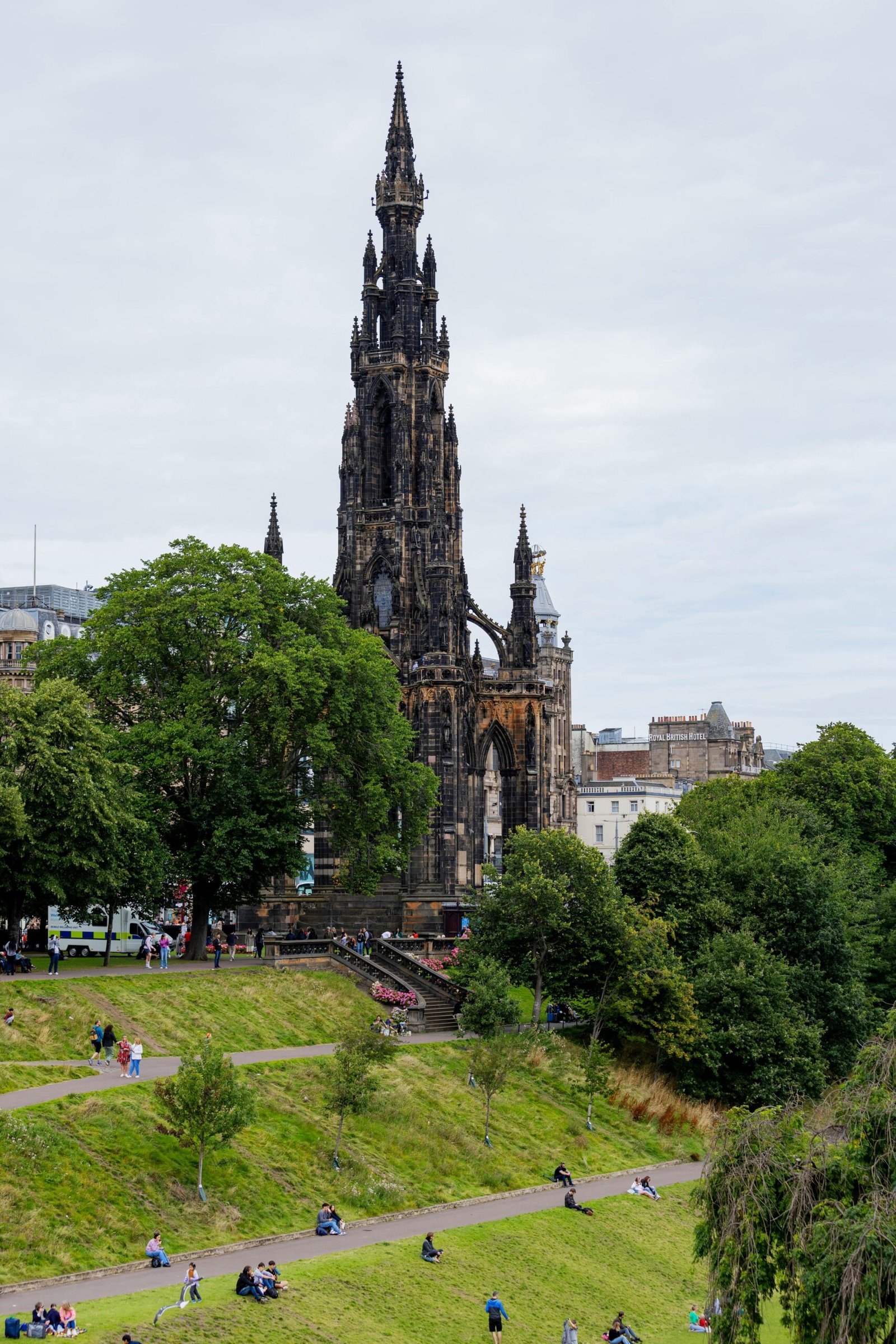
Princes Street Gardens is a public park in the heart of Edinburgh, located at the foot of the famous Edinburgh Castle. The gardens were created between 1770 and 1820, following the construction of the New Town and the covering up of the old bed of the Nor Loch, a lake that once occupied the center of the city and, over time, had become heavily polluted by sewage from the Old Town. The gardens extend along the southern part of Princes Street, one of the city's main thoroughfares, and are divided into two main areas. The eastern part, covering about 3.4 hectares, stretches from The Mound, an artificial hill created to connect the New Town with the Old Town, to Waverley Bridge. The western, larger part covers about 12 hectares and extends to St. John's and St. Cuthbert's churches in the vicinity of Lothian Road.
Princes Street Gardens are known for their many statues and monuments, which add a historical and cultural touch to the landscape. The most famous monument is the Scott Monument, erected in 1844 in honor of writer Walter Scott. Other notable monuments include statues of David Livingstone, publisher Adam Black, Professor John Wilson, and in the western part are statues honoring Allan Ramsay, Thomas Guthrie, and James Young Simpson. Other points of interest include the Ross Fountain, the music stand, the Scottish American War Memorial, and the famous floral clock.
The gardens are a popular place for local people and play a central role in Edinburgh’s social life. They serve as a meeting place and host many events, including concerts, often held near Ross’s bandstand. Throughout the year, the park is a place for relaxation and entertainment, but it is especially lively during the Christmas season.
Ogni anno, infatti, i Princes Street Gardens si trasformano nel Winter Wonderland, una sorta di paese delle meraviglie invernale. In questa occasione, il parco ospita attrazioni natalizie, un mercatino di Natale molto amato e diverse giostre. Tra le attrazioni più popolari ci sono la pista di pattinaggio e la ruota panoramica alta 33 metri, conosciuta come “The Edinburgh Eye”. Durante questo periodo festivo, è possibile assistere a numerose rappresentazioni teatrali e godere di un’atmosfera unica che attira sia i residenti che i turisti.
8. Arthur's Seat
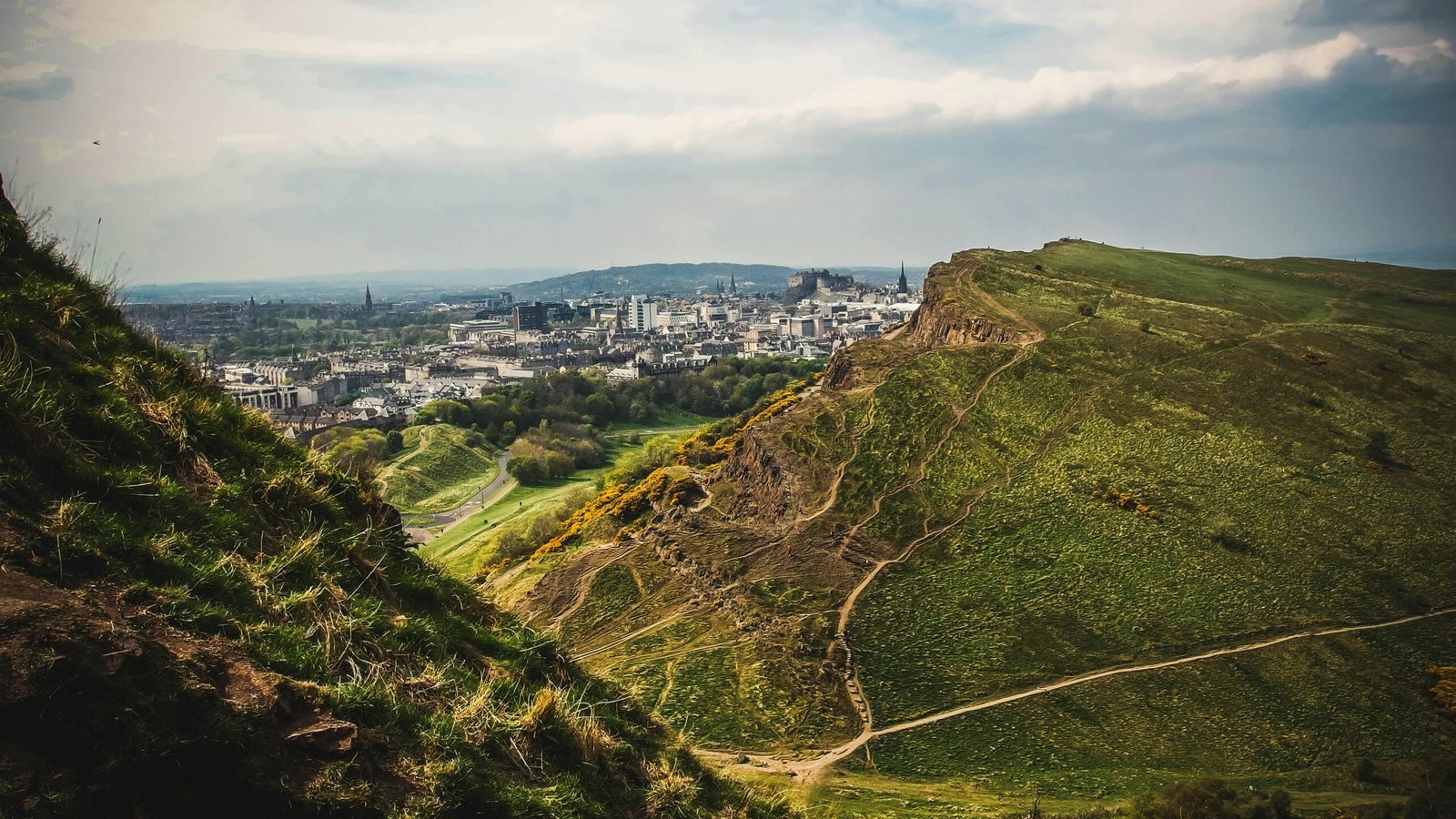
Arthur's Seat is the highest peak of the group of hills that make up the distinctive Holyrood Park, located in the center of Edinburgh, about a mile east of Edinburgh Castle.
At 251 meters high, the hill offers breathtaking panoramic views of the city. The climb is relatively easy thanks to the many well-trodden paths, with the easiest route being to the east, where the grassy slope leads toward Dunsapie Loch. Many believe that the name “Arthur’s Seat” comes from the many legends related to King Arthur, also mentioned in the poem “Y Gododdin.”
Like the rock on which Edinburgh Castle is built, Arthur’s Seat is an extinct volcano dating back to the Carboniferous period, about 350 million years ago. Erosion by glaciers during the Quaternary period shaped the landscape, creating cliffs like the Salisbury Crags and leaving traces of basalt between Arthur’s Seat and the city center. From some perspectives, the hill resembles an outstretched lion, with its extinct craters called “Lion’s Head” and “Lion’s Flank.”
9. Dean Village
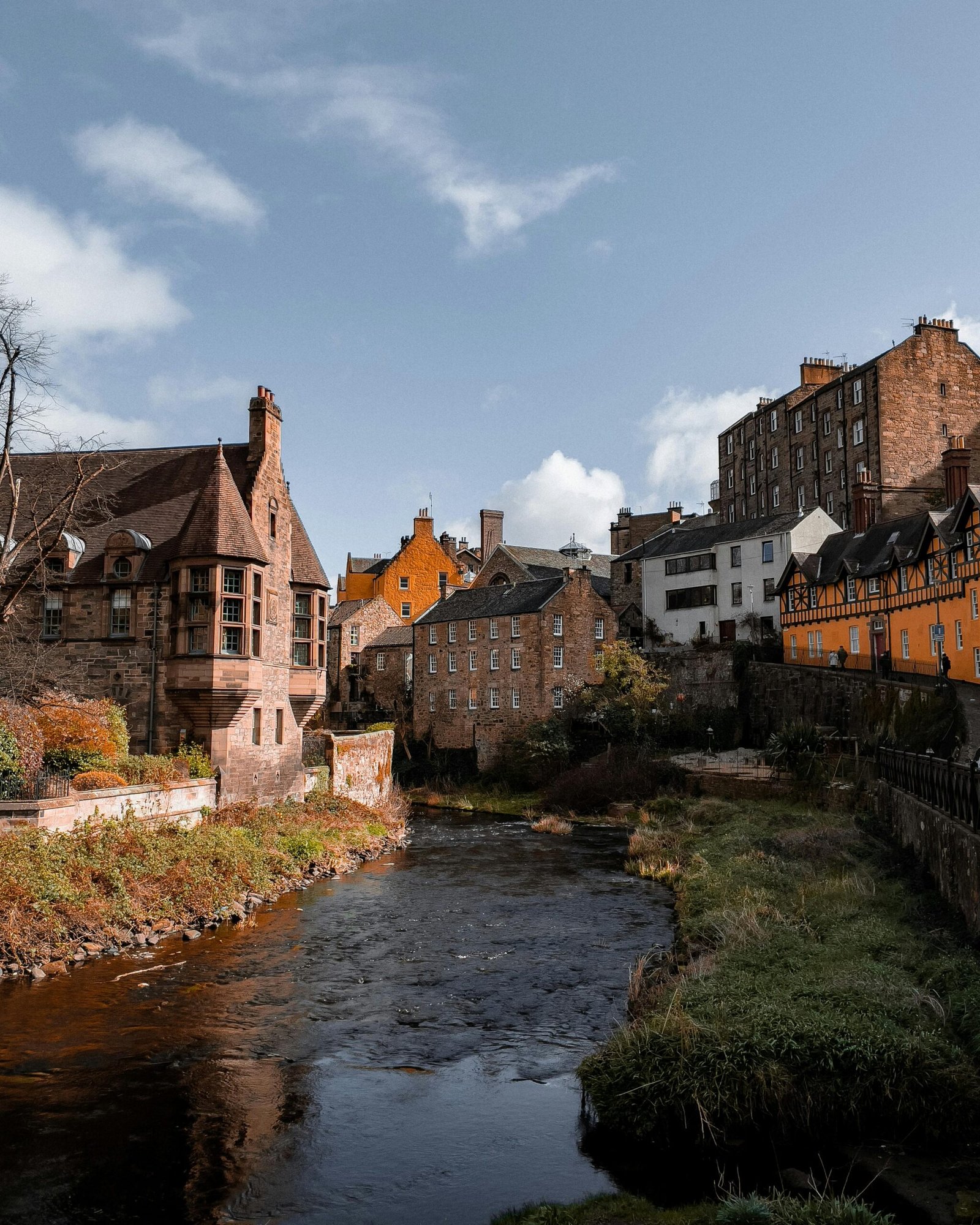
Dean Village, also known as Water of Leith Village, is a picturesque location on the banks of the River Leith, within walking distance of downtown Edinburgh. Founded in the 12th century by monks from Holyrood Abbey, Dean Village (“dene” in Scottish means “deep valley”) was an important center of industrial activity for more than 800 years, thanks to the many watermills that powered as many as eleven factories located along the river.
However, during the 20th century, commerce in the area declined sharply, and Dean Village became a poor and neglected area, particularly in the 1960s. Only a decade later did residents recognize the great potential of this quiet area close to the city center and began redevelopment work. Today, Dean Village is one of Edinburgh’s most desirable residential areas, thanks to its prime location and serene atmosphere.
Walking around Dean Village is a relaxing and charming experience. The small bridge over the River Leith and charming stone houses dating back to the 17th century contribute to the unique atmosphere. In addition to the natural beauty of the Water of Leith, the area is surrounded by interesting attractions such as the Scottish National Gallery of Modern Art and Dean Cemetery.
For those wishing to explore the area with a guide, free tours are available that combine a visit to the New Town and Dean Village, offering an in-depth overview of these historic areas of Edinburgh.
Dean Village is easily accessible from downtown Edinburgh: just follow Queensferry Street all the way down to the river.
10. National Museum of Scotland
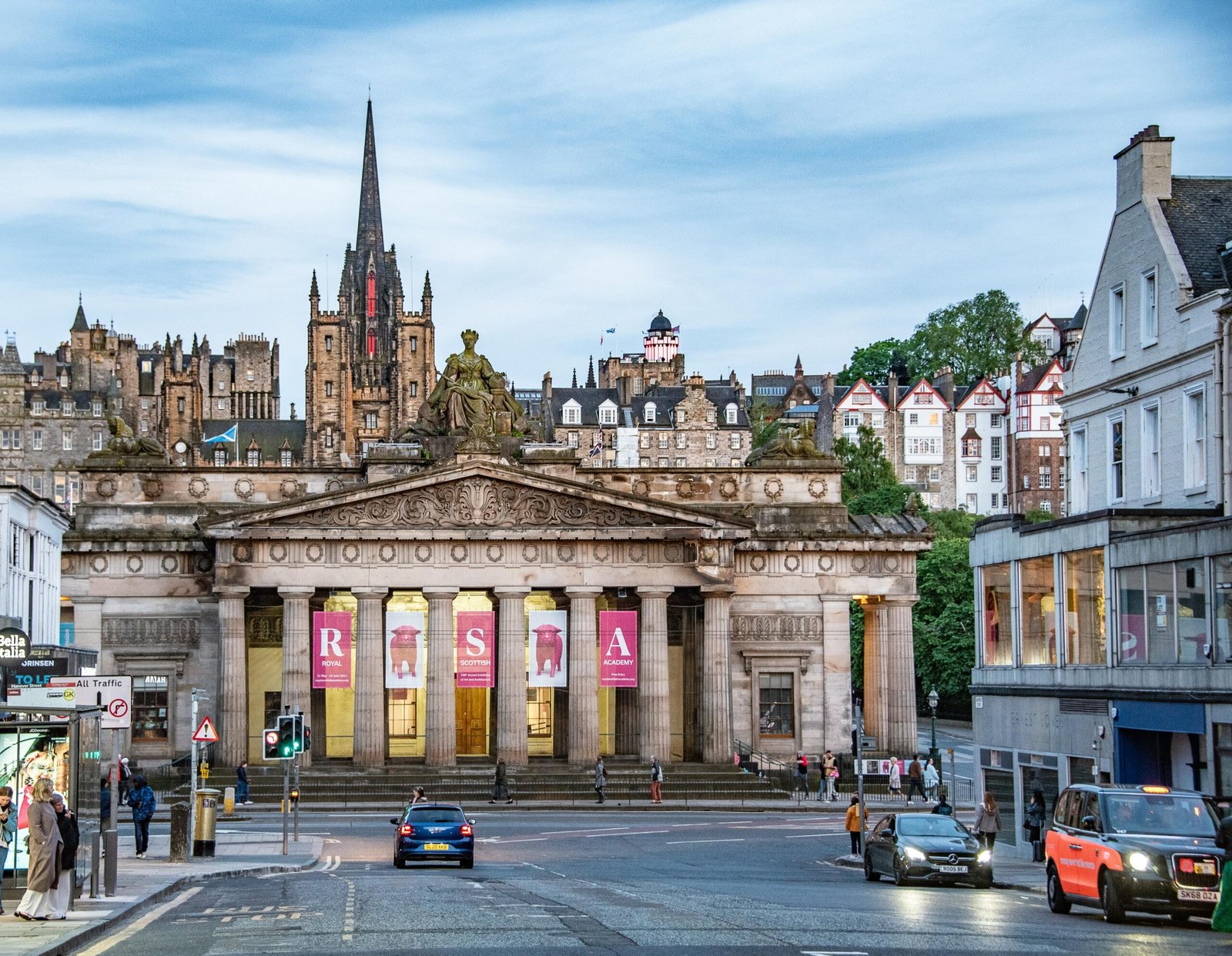
Opened in 1998, the National Museum of Scotland's modern and fascinating building houses more than 10,000 objects, including works of art, jewelry and weapons, that tell the story of Scotland from its origins to the present day. Through an exhibition tour spread over six floors, the museum guides visitors through the most important stages of Scottish history.
On the ground floor, the early inhabitants section illustrates the geological formation of Scotland and the daily life of early prehistoric people. Moving up to the first and second floors, the exhibit focuses on the Kingdom of Scotland, from 900 to 1707, and displays objects and artifacts that help understand the nation’s origins and the key figures who shaped its history. On the third floor, it explores the transformation of Scotland from 1707 to the 19th century, a period marked by union with the English Parliament and the arrival of industrialization, represented by impressive machinery still in operation.
On the upper floors, the fourth and fifth, visitors can follow the trail of Scots who moved from the countryside to the cities during the period of industry and empire. On the sixth floor, the exhibit illustrates the lives of key figures from the end of World War I to the present day through captions, videos and objects. On the seventh floor, the terrace offers an extraordinary panoramic view of Edinburgh, ideal for taking some memorable photos.
The National Museum of Scotland offers a comprehensive and immersive experience to learn about Scotland’s history in a chronological and interactive way. Among its most famous objects is Dolly, the first cloned sheep, now stuffed and on display.
As with most museums in Edinburgh, both admission and the audio guide are free, making the visit accessible to all.
The museum is located on Chambers Street and is open daily from 10:00 a.m. to 5:00 p.m., with closure on December 25 and special openings on December 26 and January 1 from noon to 5:00 p.m. You can reach the museum by several bus routes, such as the 24, 35, 41, X54 and X61.
Similar Articles

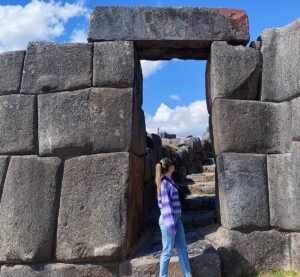
7-day itinerary to discover the Sacred Valley of the Incas. From Cusco to Machu Picchu


